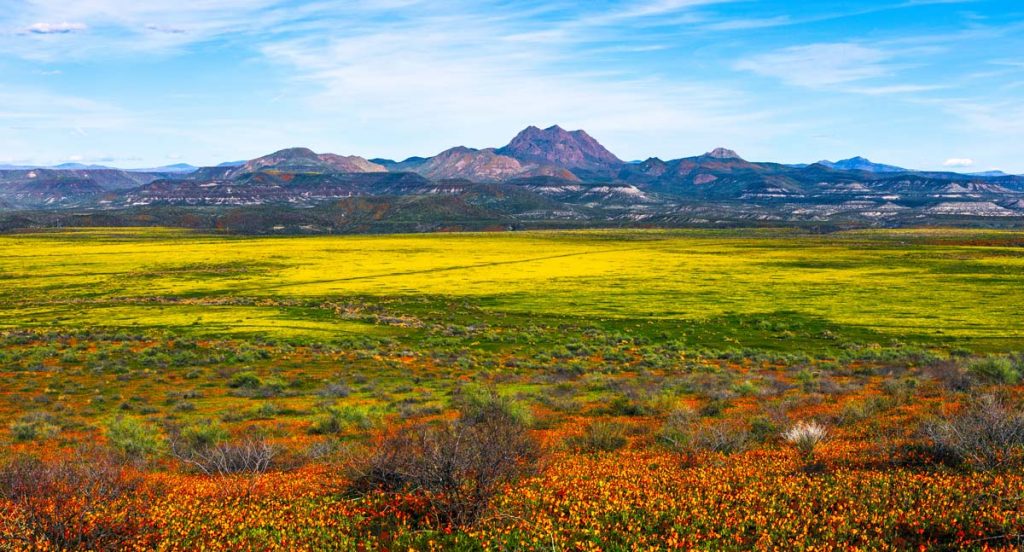A Good Climb
by M Carroll
A few years ago I was on top of a mountain in Arizona, Picacho Peak. I was just below the summit, high above the Sonoran desert between Tuscon and Phoenix—not quite at the summit. Frustrated.
The summit—a mere 20 feet above me, rising to 3,374 feet—sat atop vertical rock. A sheer wall prevented me from reaching it.
I perched upon a small 4 x 4 foot outcropping below the precipice, and warily eyed the two wire cables 2 – 3 feet apart from each other. They were attached to the mountain vertically as handholds for the intrepid. I rested after the arduous climb and wondered how intrepid I was. (See Picacho Peak, aka Hell Hike.)
My goal as a mountain climber was to reach the summit, yet I was not comfortable with going the last 20 feet after climbing 4 miles mostly straight up. My palms were sweaty. I gripped the wire cables and felt their heat in the spring afternoon desert sun, my hands slick. I positioned myself between the two cables holding onto both—a bit of a stretch for me, as though they were fashioned for a much larger person. I faced the ancient rock and gave it a little go—my hands pulling, my feet on the rock-face, climbing. Up a few feet I went, then slid back down. Then one more try.
No. Not 20 feet with slick hands and only the desert far below to catch me if I fall! I sat down to rest and to consider my plight. As I sweated in the tiny bit of shade afforded by an outcropping of rock, a couple of German hikers came down from the summit holding onto the cables. They wore leather gloves and carried sturdy walking sticks, one for each hand, and were dressed in hiking gear, aka L.L. Bean, from head to toe.
“What’s it like on the other side?” I asked.
“Not so bad,” one hiker answered. “This is the steep side,” he confided before he continued his descent.

I cursed myself for being so unprepared, and wished for a hiking companion. Two people could help each other to the top. I sat there in the desert heat for 45 minutes contemplating. I should have worn gloves. Duh. Walking sticks seemed a nice accommodation, although I’d never used them. And, of course, I could have climbed up the other side—the tourist side was how I’d looked at it. Had I come from the other direction I would have reached the summit.
Writing a book is a lot like climbing a mountain. There are many people who fancy themselves writers who’ve never complete a writing project, just like I considered myself a climber but failed to reach the summit. And no offense to them (or me)! Writing for writing’s sake is a valuable exercise, just as climbing for climbing’s sake is valuable exercise. Writing a book, however, is a steep climb. Completing a novel, memoir, non-fiction book, or poetry contemplation is a monumental achievement in any persons life.
Trouble is, when you think you’re done with your monumental writing project, you discover that you’re not at the summit! You started at the base with high hopes and long sight. You worked hard on fulfilling the demands of your vision. You persevered through the desert—through the barren times when you were parched for words. Finally, after all of that work you affixed the words “the end” to the last page of the manuscript and you sat down to rest. When you looked around to see what to do with your book now, you discovered that you had not yet reached the summit! It was 20 feet above you. The handholds were slick and there was no one to help you. You were alone—unprepared for the final, necessary step to get your book into the hands of readers.
My goal as a mountain climber was to reach the summit, but my efforts lacked planning. My wished-for a hiking companion could have been a reality and helped me over the top. I could have brought gloves, and even walking sticks. And, of course, with proper foresight, I could have hiked the other side of the mountain and I would have reached the top.
The goal of most writers is to get their writing into the minds of others, not just put words together. But many writer’s efforts lack needed planning and forethought.
As writers, we make three main mistakes:
First, we get the goal wrong. Writers often loftily pronounce our goal as writing. And sometimes it is. Writing as in journaling and diary keeping are important, respected endeavors, usually never meant for another’s consumption. But most writers write to share. They write to share their thoughts, feelings, and wisdoms gleaned. At least they hope to share. But when we’re finished writing—almost at the summit—we can discover our goal was a few feet short. Now—a bit late—we have to think about readers. Our goal should have included them all along. Authorship requires readership.
Second, we go it alone. Writing is a loner activity, and writers are often independent sorts. Joining a writing group or author’s cooperative is like having a companion on the trail. When the going gets rough, two people are better than one. Just having someone to commisserate with is of benefit.
Third, we fail to plan ahead. How many times do you have a great idea and no way to write it down or record it for later contemplation? Like a hiker, you need your writer’s backpack filled with useful stuff—both physical and metaphorical—to reach the summit of writing for readers. Those tools include a solid author platform to stand on, a publishing route mapped out, companion authors, knowledge of the obstacles and how to overcome them, and a clear vision of the audience you intend to reach.
I didn’t make it to the summit that spring afternoon. But I did learn a lot about myself, what I wanted, and how to get it. Before I backed down the steep ravine to hike the four miles back to my car, I surveyed the Sonoran desert far below. Never before had I seen such a sight! The afternoon sun cut across the peak angling burnished-rays over the valley. The desert was in flower: riotous blooms of Saguaro cactus dressed in white frills, Cholla decked out in pale pink, shocking-pink Beavertail, yellow and orange Prickly pear, Nightblooming cereus with their yellow talons surrounding a star-white center, and Organ pipe cactus towering with blooms attached miraculously between long spikes, challenging the bees. Indigo bush dotted the desert in purple, and tiny yellow Mormon tea flowers asserted themselves among pink-vining Desert sand verbena and the rare, blue Evening primrose. A splendid view and amazing reward for my efforts. As is completing your writing project a splendid accomplishment worthy of your effort. Keep scratchin’!

